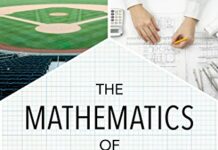
Ebook Info
- Published: 2007
- Number of pages: 472 pages
- Format: PDF
- File Size: 28.18 MB
- Authors: Alfred S. Posamentier
Description
The most ubiquitous, and perhaps the most intriguing, number pattern in mathematics is the Fibonacci sequence. In this simple pattern beginning with two ones, each succeeding number is the sum of the two numbers immediately preceding it (1, 1, 2, 3, 5, 8, 13, 21, ad infinitum). Far from being just a curiosity, this sequence recurs in structures found throughout nature?from the arrangement of whorls on a pinecone to the branches of certain plant stems. All of which is astounding evidence for the deep mathematical basis of the natural world.With admirable clarity, math educators Alfred Posamentier and Ingmar Lehmann take us on a fascinating tour of the many ramifications of the Fibonacci numbers. The authors begin with a brief history of their distinguished Italian discoverer, who, among other accomplishments, was responsible for popularizing the use of Arabic numerals in the West. Turning to botany, the authors demonstrate, through illustrative diagrams, the unbelievable connections between Fibonacci numbers and natural forms (pineapples, sunflowers, and daisies are just a few examples). In art, architecture, the stock market, and other areas of society and culture, they point out numerous examples of the Fibonacci sequence as well as its derivative, the “golden ratio.” And of course in mathematics, as the authors amply demonstrate, there are almost boundless applications in probability, number theory, geometry, algebra, and Pascal?s triangle, to name a few.Accessible and appealing to even the most math-phobic individual, this fun and enlightening book allows the reader to appreciate the elegance of mathematics and its amazing applications in both natural and cultural settings.
User’s Reviews
Reviews from Amazon users which were colected at the time this book was published on the website:
⭐The book provides much of the available information on the Fibonacci numbers. It starts with the life of Leonardo da Pisa, the man who first introduced the numbers to the world almost a thousand years ago. It describes the actual sequence, then demonstrates the connection that the numbers have to the natural, as well as to the world of the visual arts and of music. Even the stock market is not immune of the influence of the Fibonacci sequence.What particularly impressed me about this book is the clarity with which the authors present the subject. Whether you are a mathematician or simply have an inquisitive mind, you will always know the exact meaning of the subject under discussion. In fact, you can skip the (sometimes) long mathematical formulae and still never lose track of the narrative.A wonderful book that makes one ponder on the origin and significance of the created world. A must for mathematicians, scientists and generally educated individuals. A must also for those who believe that our universe and all its contents are only the product of a series of coincidences. These people may change their minds after becoming familiar with the Fibonacci numbers.
⭐Not too far into it, yet, but well written.
⭐Good product, price, and service.
⭐Rapud delivery! Ordered this book as a supplement to my math textbook. Explained all I needed to know about the Fibonacci Sequence and Golden Ratio.
⭐Book was described as “An apparently unread copy in perfect condition. Dust cover is intact; pages are clean and are not marred by notes or folds of any kind.” True BUT forgot to mention BIG RED REMAINDER DOT.
⭐Alfred Posamentier is an excellent writer and explains the secrets of mathematics in a way that all can enjoy. I have read several of his books so far and none of them have disappointed me.
⭐Fine
⭐perfect
⭐Excellent
⭐This turned out to be a difficult read when it was expected to be a fun romp through one (very important) branch of mathematics. Based on the write-ups, I had expected to be able to follow along with the theory of Fibonacci numbers, and then dive into the joy of its application across the spectrum. Instead, I kept getting bogged down with proofs and explanations, which is ironic since the author frequently states that the proofs are in Appendices!!! Even the applications were heaped with mathematical theory and proofs.I am not math dumb, in fact made a career in financial structuring which required a fairly high level of math. Yet, I was many times while reading this book left mired in proofs which started to get annoying.I think a better version of this book would be written by a layperson with guidance from the author.
⭐I have always been fascinated by this number series and its seeming connection to patterns in nature and design. I never did well in math in school not being able to easily grasp concepts and the meaning of all the symbolism. We didn’t have computers so just trying to fine a sin or cosin was a horrible task to be completed before one could even continue with the problem at hand. However, I could follow the story told here and if the math got too involved I just moved through rapidly. I really wanted the big picture that this provided. I did not realize that our Arabic numbering system was only adopted in the time of Fibonacci – 1200’s. Sure would have thought the West would have caught on sooner. Taking the square root of a Roman numeral must have been something to behold.
⭐Die Autoren bemühen sich um eine möglichst allgemein verständliche Ausdrucksweise. Dies geht leider manchmal auf Kosten mathematisch einwandfreier Formulierungen. Dabei kann auch die Schmerzgrenze für Mathematiker überschritten werden, wenn zum Beispiel die imaginäre Zahl i als Quadratwurzel von –1 definiert wird. Wenn das richtig wäre, könnte man logisch folgern 1 = √[(–1)∙( –1)] = √(–1)∙√( –1) = i ∙ i = –1. Von solchen Merkwürdigkeiten lässt sich sogar der Nobelpreisträger und Verfasser des Nachwortes, Herbert A. Hauptmann anstecken, wenn er schreibt, dass Primzahlen genau die Zahlen seien, die sich nur durch 1 und durch sich selber restfrei teilen lassen. Wenn dies richtig wäre, dann wäre auch 1 eine Primzahl, was dann selbst Hauptmann nicht behauptet. Wenig erfreulich aus mathematischer Sicht ist auch der Umgang mit Irrationalzahlen, etwa der Zahlenverhältnisse des Goldenen Schnittes “PHI” und “phi”. Beide Zahlen werden von den Autoren auf 100 Stellen (was soll das?) hinter dem Komma angegeben und jeweils durch ein Gleichheitszeichen (!) mit ihren Symbolen verbunden. Nicht genug damit, es wird auch noch behauptet, dass sich PHI und phi offensichtlich (!) um 1 unterscheiden. Wie will man das denn wissen, wenn die Dezimalbrüche der genauen Zahlen unbekannt sind? Dabei ist der Beweis für PHI – phi = 1 gar nicht schwierig. Dazu muss man allerdings auf die alberne Dezimalbruchdarstellung verzichten und stattdessen ein bisschen Termumformung anbieten. Mit solchen Schwierigkeiten soll der Leser aber erst im Anhang belastet werden, in dem dann einige Beweise folgen. In weiser Selbstkritik merken die Autoren an, dass wohl einige ihrer Beispiele etwas konstruiert oder sogar an den Haaren herbeigezogen wirken könnten. Diesen Eindruck wird der Leser bestätigen, wenn terminologische Spielereien die Autoren zu immer neuen Beispielen führen: Zwei verschiedene Farben, Münzwerte, Ziffern oder Bewegungsrichtungen liefern nur Varianten auf den gleichen mathematischen Sachverhalt. Dies sollte zumindest erwähnt werden. Auch die Verwendung der FIBONACCI-Folge zum Zwecke einer recht originellen Multiplikationsmethode ist eigentlich in einem grundsätzlicheren Zusammenhang zu sehen und dann gar kein Spezifikum der FIBONACCI-Folge mehr. Eine Übersetzung des Buches in die deutsche Sprache ist sicher nicht vorgesehen und wäre auch entbehrlich, weil es in deutscher Sprache bereits wesentlich bessere Bücher zu diesem Thema gibt.
⭐
⭐I bought this after watching a great P.B.S. program about math. After about half an hour I got to pages that used math equations with symbols that I had never seen before (I’m 68). Fascinating subject but a little too advanced for my antiquated brain
Keywords
Free Download The Fabulous Fibonacci Numbers in PDF format
The Fabulous Fibonacci Numbers PDF Free Download
Download The Fabulous Fibonacci Numbers 2007 PDF Free
The Fabulous Fibonacci Numbers 2007 PDF Free Download
Download The Fabulous Fibonacci Numbers PDF
Free Download Ebook The Fabulous Fibonacci Numbers




